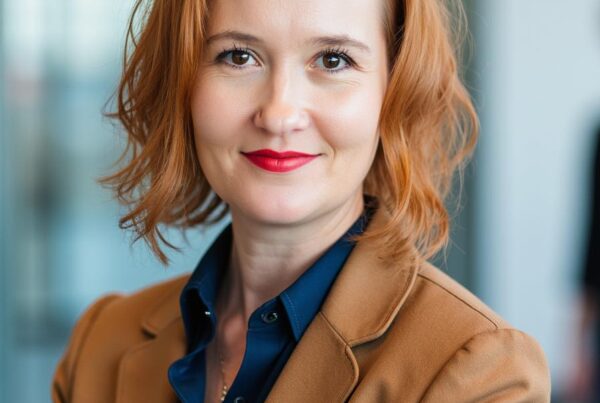How are we travelling now Semester 1 is over?

Author: Martin Betts | As seen in Campus Review
When the first semester of 2020 commenced last year, there was a broad sense of optimism in our universities.
Our new students were looking forward to their promised campus experiences. Record numbers of international students were making tracks towards us. University leaders were outlining expansive campus development plans. Staff were setting personal ambitions based on certainty and reliability in long established business models, and operating environments.
And then they weren’t. When we got to the end of 2020, we were exhausted and glad it was all over. Except it wasn’t.
Starting this year, we were already tired. We were being stretched through organisational changes. We were grieving lost colleagues and organisational entities. We had even deeper resource constraints to somehow try to work within. Our class lists were even fuller with increased domestic student numbers. And we were required to plan and deliver multiple course offerings, in hybrid operations, in conditions that were continually changing.
We submitted record numbers of competitive grant applications. These resulted from the increased pressure every staff member felt, and the increased focus that working from home, and lack of overseas holidays, left them with. Success rates may take a nosedive this year, given no new funding is available, for an even hungrier research community.
Now semester 1 is over. We had hoped we would be back on campuses with our students, and some were, in part. But is any university, or its staff group, any more certain of what will happen next semester than they were before this one started, in any state in Australia?
Where are we up to? Unusually, Universities Australia (UA) met at the end, not the start of semester 1. But years seem to go on forever at the moment. Semesters are probably feeling similarly interminable for most staff and students.
In Canberra, we had a new UA Chair and a new federal education minister join a partly face-to-face conference, remember them? It was, in some ways, a state of the nation health check. We learnt that the biggest challenge is still the combination of the lack of onshore international students and uncertainty of how to respond to the pressure for campus returns that has been coming from all. That just got even more uncertain this week.
We learnt of the expectation to embrace new opportunities of research commercialisation. And were given new targets of a quarter of a million enrolments, by online or offshore international students, for each Australian university in 10 years’ time. And that we might expect to see greater differentiation of universities, in terms of functions of research and/or teaching, or in terms of disciplines. What do you think the minister meant?
There appears to be an opportunity divide opening up between universities that might stay true to local and community purposes and missions, and those that could be expected to enter into fiercer global competitions for a much-changed international student market. The distinctive Australian campus experience, that has been so attractive up until now, will have to be re-imagined whichever side of that divide we choose. Whether all universities will be allowed to choose to both teach and research seems to have been put into question.
But what of the choices that staff might make in the future? Some may have chosen a school holiday interstate break for this week, until the most ill-timed of new COVID-19 outbreaks started to spread across all states.
The mental state of all of our staff and students is under intense pressure, just when most had been looking forward to catching their breath. The uncertainty has now just ramped up further, rather than settling. It is at times like this that clarity becomes crucial rather than seeking unattainable certainty. Clarity of organisational and personal strategy is the number one goal for every university and academic in the sector right now.
The choices for each university will be critical to determining how they emerge from this period of accelerated change and new opportunities. But what choices do the staff of our universities have? And how might they navigate them? What clarity can any of them develop, at a time like this, of what they want to do next, and how they want to do it?
It is a time when culture comes to the fore. University staff and student cultures are under more pressure than they have ever been. And the challenge of leadership has never been greater. “Leaders have never had it so tough,” is a report card headline that seems inarguable. As our sector leader John Dewar, who now chairs UA, said on the HEDx podcast he recorded last week, “academic leadership is the most challenging job you can do” and now it has just got harder.
The cultural context of the continued uncertainty and mounting pressure on leaders and staff have seen sexism, harassment and bullying issues rise even further. And we finish the semester, when things were meant to start getting easier, with even higher levels of cumulative tiredness, and stress that arises from continuing and deepening uncertainty.
The Chair of UA paid tribute to all staff in our universities for how they have responded to these issues. He did so in a similar way to how Jane den Hollander referred to them as the gold at the base of the pyramid, in an earlier episode of HEDx. John described the rate at which staff had learnt new skills and adapted, as being much faster than any of them could ever have imagined. It was certainly more than they would have wished for.
There is clearly much more change to come. With so much sector, institutional and personal uncertainty still ahead, gaining clarity on what we have learned, and what we do with that learning, is the end of term lesson for us all. It will be crucial in getting ready for the even bigger challenges ahead, in Semester 2 and beyond.
I don’t think anyone in the sector is ready for any grading, as exam results get published around the country in the coming days and weeks. They might be like our students: just glad they have got through it. We wish all staff well, and urge them to find clarity on how to do their best in Semester 2 and beyond, or to do something different. Who knows, those new skills might be about to become very valuable. We might be about to enter a period of an abundance of opportunity rather than an abundance of caution.
After all, has there ever been a time of greater need for learning and new ways of doing things?







